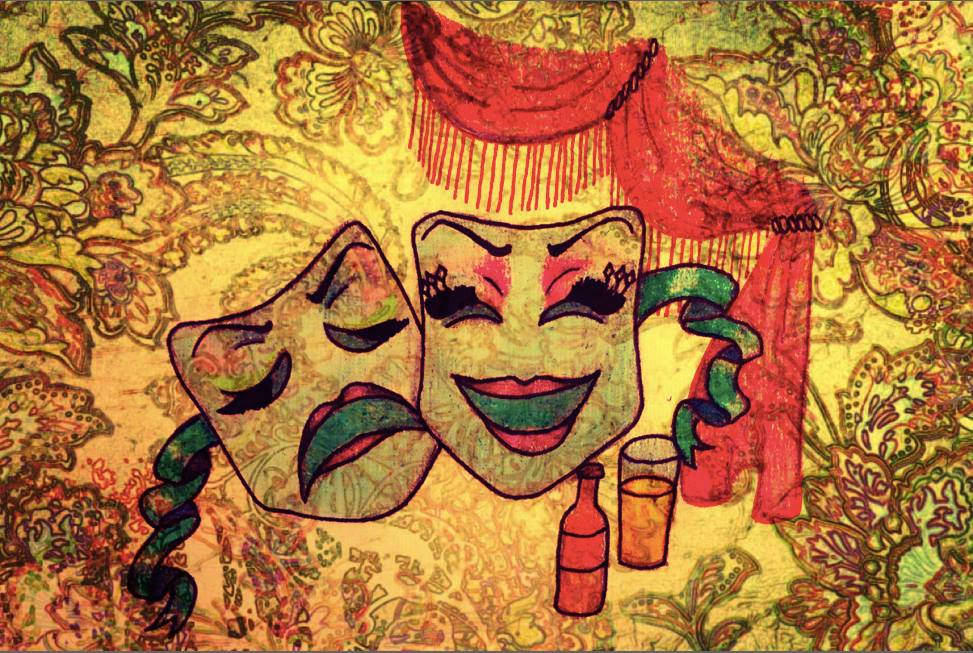“FRINGE, the eternal teenager, is turning 25.” Such is the proud proclamation of Mado Lamotte, spokesperson for the 2015 St-Ambroise Montreal Fringe Festival on their website. This year celebrates a quarter of a century since McGill students Kris Kieren and Nick Morra started Montreal’s Fringe on the McGill campus in 1991.
Although it has faced several large obstacles over the years, Fringe today is snuggly woven into the fabric of the Montreal community.
When The Daily spoke to Amy Blackmore, now in her 5th year as executive & artistic director of the festival, one thing was clear – her championship of the shows’ accessibility to the greater Montreal community and of the festival’s role in community building. One of her current projects for the festival is to promote the creation of bilingual work, reflecting the identity of the city which hosts the festival. This plays directly into the Canadian Association of Fringe Festivals’ (CAFF) ideals of producing work “selected on non-juried basis,” having no artistic censorship, and being easily accessible to all artists and audience members.
It is not surprising that with the amount of theatre work happening at McGill – through Players’ Theatre, the Tuesday Night Cafe (TNC) Theatre, and the like – a hub for marginal, new theatre has emerged on campus.
It is no secret that McGill remains, to a large extent, an upper-middle-class-anglo bubble removed from the greater Montreal community, despite the work done by various student groups to remedy this. So, it is endlessly fascinating that from this isolated world, such a long-lasting and comprehensive community-based festival has emerged. It is not surprising that with the amount of theatre work happening at McGill – through Players’ Theatre, the Tuesday Night Cafe (TNC) Theatre, and the like – a hub for marginal, new theatre has emerged on campus. However, when Fringe outgrew its academic home and moved to its current Plateau location, it suddenly had to cater to the needs of a community much more diverse than that of McGill.
Since its inception, Fringe and Montreal quickly became the thickest of thieves, with the festival making adjustments as it went along, such as mandating that half the local shows be in French and, recently, adding a ‘bilingual’ category for shows. Fringe has been successfully responding to the pulse of its host city.
This is not as easy a feat as it may seem. Fringe is one of the few festivals that foster discussion between francophone and anglophone artistic communities in the city. This is thanks to, in large part, Fringe’s beer tent. The ability to chat with anyone involved with the festival over a beer in a casual environment is vital to the life of Fringe, successfully dismantling any schmoozing stigmas attached to inter-artist discussion. The festival has taken this even further, introducing the 13th Hour at Petit-Campus as a nightly after-party, giving shows an advertisement opportunity as well as creating a casual atmosphere for artists and audience members to mingle.
The ability to chat with anyone involved with the festival over a beer in a casual environment is vital to the life of Fringe, successfully dismantling any schmoozing stigmas attached to inter-artist discussion.
It is in the creation of this environment that Montreal differs from other Fringe festivals, preserving a calm, unceremonious, and uncompetitive vibe that is typically absent from other Fringes. It is easy for those who have been to the larger Toronto or Edinburgh Fringe festivals to associate the idea of Fringe with an overwhelming experience. Montreal is refreshing with its open, non combative air – but don’t let that fool you into thinking that it’s not as ground-breaking as other Fringes.
Montreal is the perfect incubator for new work, with the mixing of cultures and electric undercurrent of social unrest. Speaking to The Daily, Blackmore stressed that audiences want to see stories that are relevant to them, presented by people who have lived those same experiences. Although Montreal’s Fringe still needs to take active steps to distance itself from the white privileged space of mainstream theatre (the audience members and performers still remain predominately Anglo and white), it is invigorating to step into a world that fosters new and multidisciplinary work, made for the people of this city largely by those who live within it.
On its 25th birthday, Montreal’s Fringe remains an integral part of the city’s summer arts culture, and an important place for artists of any kind to create and share.
